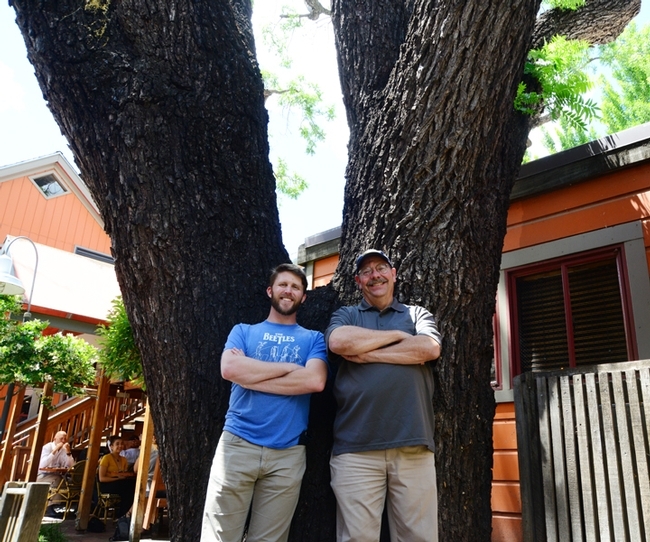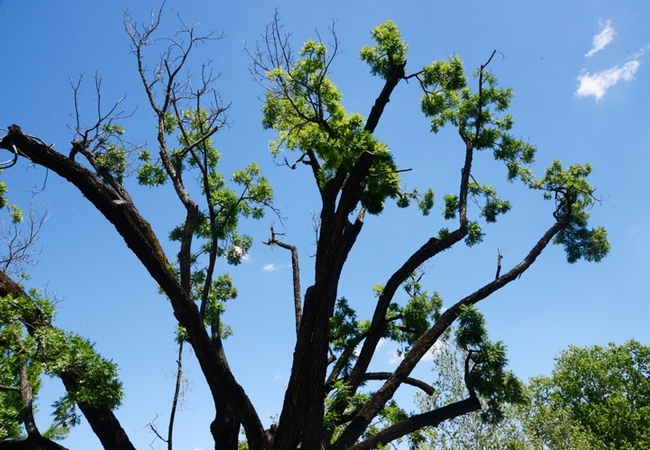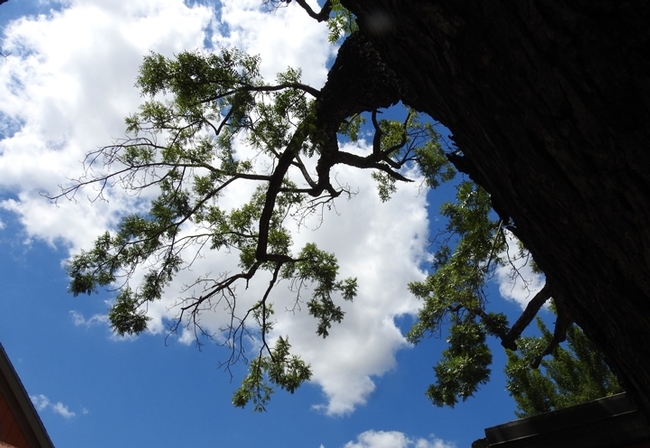Posts Tagged: Canker
A Sign of the Times: Why This Black Walnut Tree Is Dying
If you've ever walked into the courtyard on the 100 block of E Street in downtown Davis, Calif., you've probably noticed the massive black walnut...

Forest entomologists Steve Seybold (right) and Jackson Audley stand by a 150-year-old black walnut tree on the 100 block of E Street. It is dying of thousand cankers disease. (Photo by Kathy Keatley Garvey)

Walnut twig beetles tunnel into branches and trunks of walnut (Juglans) where they create galleries for mating and reproduction. In association with a canker producing fungus, Tthey cause a disease known as thousand cankers disease. This tree is in downtown Davis, Calif. (Photo by Kathy Keatley Garvey)

This massive, 150-year-old black walnut tree on the 100 block of E Street, Davis, is dying of thousand cankers disease. (Photo by Kathy Keatley Garvey)
California farms grow pumpkins for fun, not profit
California is the nation's No. 2 pumpkin producer, but the crop is unusual among the state's agricultural commodities, according to an article in the Los Angeles Times by Diana Marcum. Pumpkin farms tend to be small and most pumpkins are sold directly to consumers by farmers at roadside stands or U-pick operations. California pumpkins are more commonly used for jack-o'-lanterns than pie filling.
"Pumpkins are really different," said Tom Turini, a farm advisor with the University of California Cooperative Extension in Fresno. "We're not trying to feed the world pumpkins. It's more about tradition, family. It's farmers just having a little fun."
Fungal Killer of Cypresses Originated in California
John Upton, New York Times
Last month, scientists from UC Berkeley and the National Research Council in Italy reported that they traced Seiridium, the fungus that causes cypress canker disease, back to Monterey cypresses in California. The fungus has caused a deadly epidemic in the world’s forests.
According to the article, Matteo Garbelotto, a forest pathologist at Berkeley and a member of the team of scientists, said that the problem began roughly a century ago when landowners started planting Monterey cypress trees in the California Central Valley and in Europe. Outside of their natural environment, they became weakened and more susceptible to infection. As the trees’ immune systems grew weaker, the fungus grew stronger, until it prevailed.


